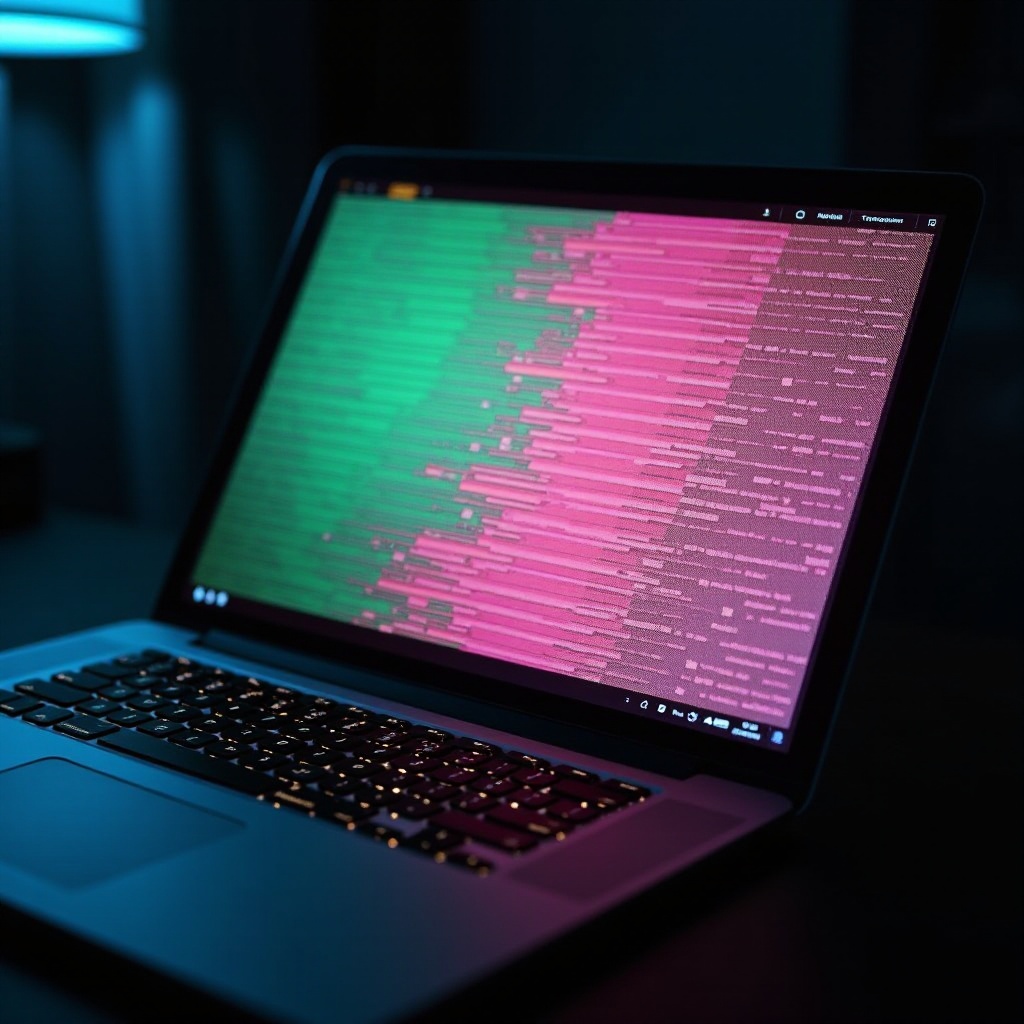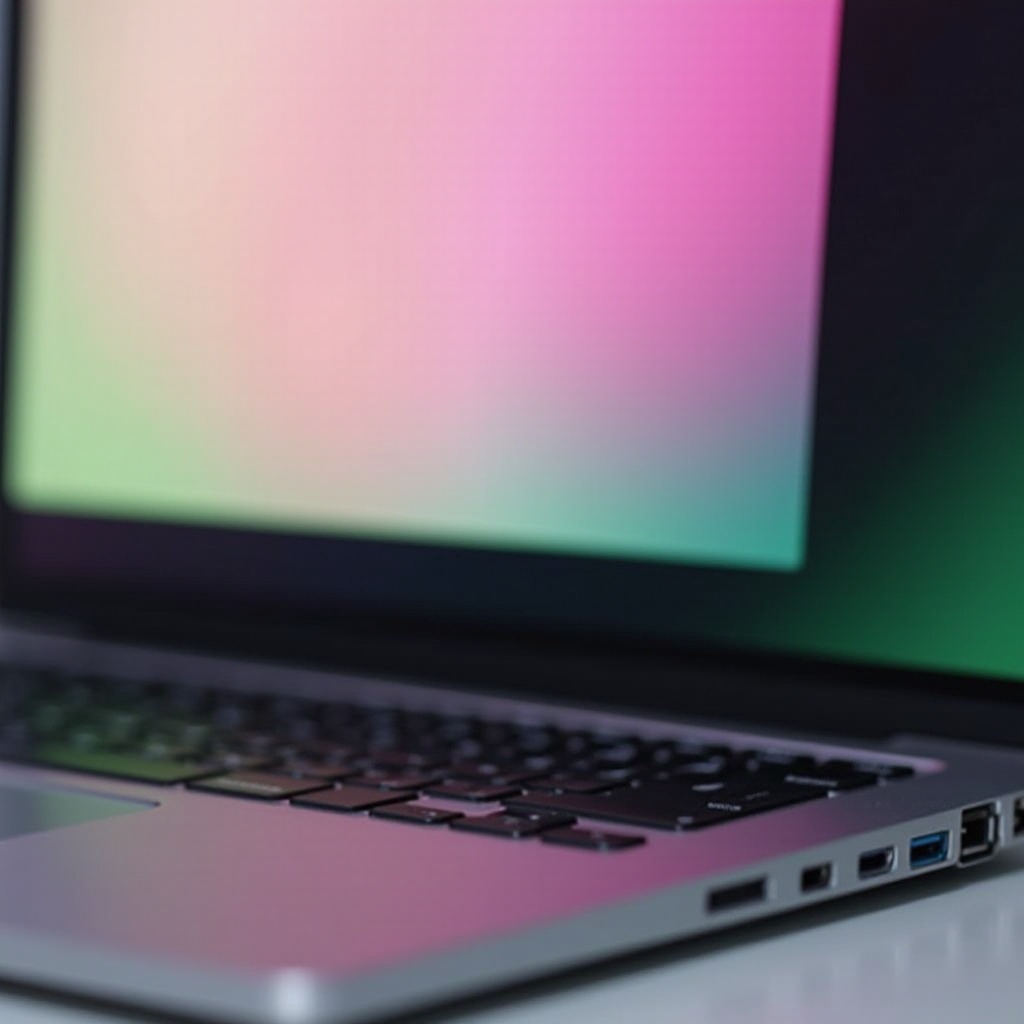Introduction
You’re engrossed in your work or leisure activities when your laptop screen suddenly turns pink and green. This issue can be both alarming and frustrating, disrupting your productivity and enjoyment. Understanding the root causes of screen discoloration is key to resolving the problem. In this comprehensive guide, we will explore both hardware and software reasons behind this peculiar issue, offering practical troubleshooting steps to restore your laptop screen. By the end of this article, you will know when to seek professional intervention and have your questions answered, ensuring peace of mind.

Understanding the Problem
When your laptop screen displays pink and green colors, it’s usually a sign of underlying problems. The issue may arise from hardware-related concerns, such as loose cable connections or a faulty graphics card. On the other hand, software issues like outdated drivers or incorrect calibration settings can also lead to this discoloration. Understanding the distinction between hardware and software causes is crucial for effective troubleshooting. By gaining insights into these aspects, you can approach the problem methodically, ensuring a thorough restoration of your screen’s usual appearance.
Common Hardware Causes
In many cases, hardware issues are responsible for the screen discoloration on your laptop. Understanding these causes helps determine whether you can fix it yourself or need professional repair services.
Loose Cable Connections
Loose or damaged cable connections between the laptop display and the mainframe can lead to unusual color appearances. When cables aren’t securely connected, signals can misfire, resulting in distorted display colors. Inspecting and reseating these cables often resolves the problem instantly, restoring normal screen operation. However, hardware isn’t the only area to investigate; software issues can also lead to these strange color combinations.
Graphics Card Issues
The graphics card plays a critical role in processing visual data and presenting images on the screen. Malfunctions or failures can result in distorted colors, including continuous pink and green displays. Checking your graphics card’s functionality and ensuring it’s properly installed can help avert these problems. If the issues persist, particularly on older or defective cards, replacing the graphics card might be necessary. Let’s now delve into the software causes, which can also significantly impact screen colors.

Software-Related Issues
Software-related issues can be just as culpable for your screen’s discoloration as hardware problems. Identifying and resolving these can help restore your laptop’s normal display.
Outdated or Corrupt Display Drivers
Drivers act as conduits for communication between system software and hardware components. When display drivers are outdated or corrupt, they can cause color distortion on your screen. Regularly updating your drivers via the manufacturer’s website can fix these issues, ensuring compatibility with your laptop’s operating system. If you encounter persistent corruption, reinstalling the drivers might be necessary.
Incorrect Calibration Settings
Incorrect display calibration settings may also cause unusual color tones on your laptop screen. Your operating system’s calibration tool can help adjust these settings to recalibrate the display colors. By accessing these settings through the control panel and following the on-screen instructions, you can refine color precision and effectively resolve the issue. With both hardware and software causes covered, knowing the steps to troubleshoot these issues is crucial.
Step-by-Step Troubleshooting Guide
Armed with knowledge about hardware and software causes, you can proceed with troubleshooting steps. These solutions will help identify errors quickly, minimizing downtime.
Initial Checks and Solutions
- Reboot your laptop to rule out temporary software glitches.
- Examine cable connections for signs of damage or looseness.
- Update display drivers from the manufacturer’s website.
- Use built-in calibration settings to adjust screen colors.
Advanced Troubleshooting Steps
- Boot your laptop in Safe Mode to isolate software-related issues.
- Test external monitors to determine if the screen’s hardware is faulty.
- Consider graphics card replacement if advanced issues are unresolved.
- Seek advice from forums or communities for model-specific guidance and solutions.
When to Seek Professional Help
It’s essential to know when to escalate the issue and seek professional help. If your troubleshooting efforts don’t resolve the discoloration, or if your laptop is still under warranty, consider consulting a technician. Persistent graphics card issues or irreparable hardware problems can benefit from expert intervention. Professional repair services ensure thorough diagnostics and can address complex problems efficiently, preventing future occurrences.
Conclusion
Screen discoloration on laptops, showcased by pink and green hues, can be traced back to both hardware and software issues. Understanding these causes equips you with effective troubleshooting methods, ensuring prompt resolution and restoring your laptop to normal functionality. This step-by-step guide helps identify quick fixes and highlights when professional help is necessary. Armed with this knowledge, maintaining an optimal display on your laptop is achievable, enhancing your user experience.
Frequently Asked Questions
Can a virus cause my laptop screen to be pink and green?
A virus might indirectly cause display issues if it affects system processes or drivers. Running antivirus software can help eliminate this possibility.
How do I check if my laptop screen problem is hardware-related?
Connect an external monitor. If the display is normal, the issue likely lies in your laptop’s hardware, such as cables or the screen itself.
Is it better to repair or replace a laptop with screen discoloration issues?
Repair is often cost-effective unless multiple components need replacing. Evaluate warranty options and professional diagnostics before deciding.